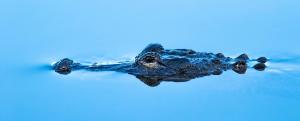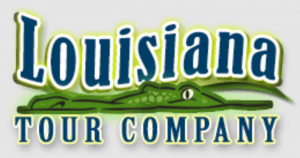Seasonal Swamp Changes: What Alligators and Other Wildlife Do When Fall Arrives
What they do is enter a state called brumation. It’s similar to hibernation, but it’s unique to reptiles”
MARRERO, LA, UNITED STATES, August 5, 2025 /EINPresswire.com/ -- As summer shifts to fall across South Louisiana, the swamp begins to transform—subtly at first, then more noticeably as temperatures drop and the daylight hours shorten. Among the most frequently asked questions from visitors during this time: do alligators hibernate?— Milton Walker Jr.
According to Milton Walker Jr., owner of Louisiana Tour Company in New Orleans, the answer is more nuanced than a simple yes or no. “Alligators don’t hibernate in the traditional sense,” said Walker. “What they do is enter a state called brumation. It’s similar to hibernation, but it’s unique to reptiles.”
Brumation occurs when reptiles slow down their activity due to cooler temperatures. In the swamp, this means that alligators become less visible and far less active during the fall and winter months. As ectothermic (cold-blooded) animals, alligators depend on external temperatures to regulate body function. When the air and water cool, metabolism slows, feeding decreases, and movement becomes minimal.
During brumation, alligators often retreat into dens or submerged burrows—natural or self-dug shelters that provide insulation from cold snaps. Some remain partially submerged with only their snouts above water, especially during milder weather. Unlike hibernating mammals, however, they don’t fall into a deep sleep. They remain aware of their surroundings and may emerge during warmer days.
In South Louisiana’s marshes, bayous, and canals, these behavioral shifts affect not only alligator sightings but the overall rhythm of the swamp. Fewer surface movements, less splashing, and reduced feeding activity create a quieter, more still environment. This seasonal change offers a different kind of swamp experience—more subtle, but equally fascinating.
Other wildlife also adapt as fall arrives. Wading birds such as herons and egrets shift their hunting patterns in response to changing water levels and cooler temperatures. Fish and amphibians adjust activity based on light and warmth. Insects like mosquitoes decline in number, while turtles begin basking less and retreating more often into the mud.
Plant life in the wetlands reflects the seasonal change as well. Cypress trees begin to shed their needles, turning burnt orange and copper before going bare. Water hyacinths and duckweed recede. Grasses change hue, giving the landscape a more subdued palette than the lush greens of summer.
Fall is also a period of increased bird migration. Swamps serve as key rest stops and feeding grounds for migratory species heading south for winter. This temporary shift in population offers unique opportunities for birdwatchers and nature photographers. The skies may feature species not commonly seen during warmer months.
Walker notes that the quieter pace of the swamp in fall doesn’t mean the ecosystem shuts down. “Everything keeps moving—it just moves differently,” said Walker. “Instead of the bold activity of summer, the swamp takes on a more rhythmic, measured energy.”
Tour operations during fall often adapt routes and timing to take advantage of seasonal changes. Morning and midday tours may provide better wildlife visibility during cooler months, while evening tours focus more on the atmosphere and landscape. Experienced guides explain not only what is visible, but also what lies just beneath the surface—literally and metaphorically.
Safety protocols also adjust slightly as animal behavior shifts. While alligators are less active in cooler temperatures, they remain present and aware. Guides continue to observe and respect wildlife boundaries, understanding that even sluggish reptiles are still capable of quick movements when provoked.
For visitors unfamiliar with the natural cycles of the swamp, fall can offer a richer, more introspective experience. With lower humidity, fewer insects, and reduced noise, the environment becomes more meditative. Echoes carry farther. Ripples seem sharper. The stillness allows for closer observation of details—feather patterns, moss movements, ripple trails from small fish or frogs.
The educational value of fall tours increases as guides interpret seasonal biology, helping guests understand how animals and plants survive and thrive through the changing weather. For example, alligator brumation is often compared to torpor in birds or metabolic slowdown in bears—but with key physiological differences that reflect the adaptability of reptilian life in the wetlands.
Cultural history also weaves into the fall swamp narrative. For generations, local residents have adjusted hunting, fishing, and trapping practices based on seasonal wildlife patterns. Tour discussions often include how these changes influenced food traditions, shelter construction, and even folklore across coastal Louisiana communities.
Louisiana’s wetlands operate on a timeline dictated by nature, not the calendar. Fall may not bring dramatic color shifts or sudden frosts, but it signals a quiet transformation that reshapes the landscape and its inhabitants. For those who observe closely, this time of year reveals an intricate web of survival strategies unfolding just beneath the surface.
About Louisiana Tour Company
Louisiana Tour Company, owned by Milton Walker Jr., is based in New Orleans and offers guided airboat, swamp, and plantation tours across the Greater New Orleans area. With a focus on ecological education and cultural history, the company provides immersive experiences that connect guests to the natural rhythms and heritage of Louisiana’s wetlands.
Morgan Thomas
Rhino Digital, LLC
+1 504-875-5036
email us here
Visit us on social media:
Facebook
Legal Disclaimer:
EIN Presswire provides this news content "as is" without warranty of any kind. We do not accept any responsibility or liability for the accuracy, content, images, videos, licenses, completeness, legality, or reliability of the information contained in this article. If you have any complaints or copyright issues related to this article, kindly contact the author above.


